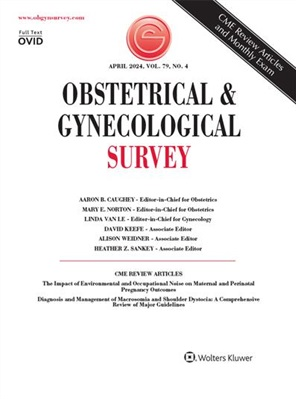长期使用左炔诺孕酮宫内释放系统(LNG-IUS) 52 mg:用群体药代动力学方法评估体内左炔诺孕酮释放率和全身暴露,包括与其他两种LNG-IUS的比较
IF 4.3
4区 医学
Q1 OBSTETRICS & GYNECOLOGY
引用次数: 0
摘要
经过30多年的使用,左炔诺孕酮释放宫内系统(LNG-IUSs)已被证明是非常有效的避孕方法。LNG- ius的有效成分左炔诺孕酮(LNG)直接释放到子宫腔内,导致子宫内膜成熟受到抑制,宫颈粘液增厚。与含lng的药片或植入物相比,各种LNG-IUS选择具有良好的安全性和有效性,可将全身暴露降低2至18倍。通过在各自的使用期间对液化天然气释放和暴露进行标准化比较,可以鼓励以患者为中心的产品选择决策。在menrena延长试验(MET)中,设计了延长menrena使用5年以上至8年的疗效、安全性和PK的评估,从而促进了LNG-IUS 19.5 mg和LNG-IUS 13.5 mg的比较。使用经过验证的液相色谱-串联质谱法和SHBG浓度,作者确定了血浆LNG水平的浓度。使用二氯甲烷从移除的IUS装置中提取弹性体材料中的残余LNG,然后通过液相色谱法和反相柱上的外部校准进行定量。虽然以前的模型使用测量的LNG和SHBG(血清)浓度,但群体药代动力学(popPK)允许在不同的药理学研究之间进行统一的比较方法。popPK方法允许在整个8年的使用期内对体内LNG暴露和释放进行可靠的估计。MET招募了年龄在18-35岁的绝经前妇女,进行了一项多中心单臂研究,研究对象是在过去4.5-5年使用LNG-IUS 52毫克至8年的患者。该研究于2016年12月22日至2021年5月28日在美国54个中心进行,主要结局是避孕效果和失败率。参与者都提供了书面的知情同意书。popPK方法的研究优势包括其稳健的方法,提供体内释放率估计的能力,从使用第6年到第8年的模型适用性逐步演示,基于模型的未绑定液化天然气估计,以及从稀疏可用样本中提供总体和个体PK概况估计的能力。局限性包括研究结果可能是群体效应,可能不适用于所有LNG-IUS用户。此外,由于LNG暴露的全身性,数据未能提供局部子宫内膜和宫颈LNG浓度。最后,popk Mondale不应该用于理论问题的处理(例如在可用数据集之外创建速率释放估计)。综上所述,一组广泛的数据表明,可靠的LNG暴露是由8年的popPK和释放模型提供的,最长可达7年的LNG- ius 52毫克使用。数据支持6-8年的使用效果,在此期间持续释放LNG。52mg LNG- iud的全身LNG暴露与其他LNG- ius装置相当,且显著低于口服和植入的含LNG避孕药。本文章由计算机程序翻译,如有差异,请以英文原文为准。
Extended Use of Levonorgestrel-Releasing Intrauterine System (LNG-IUS) 52 mg: A Population Pharmacokinetic Approach to Estimate In Vivo Levonorgestrel Release Rates and Systemic Exposure Including Comparison With Two Other LNG-IUSs
ABSTRACT With over 30 years of use, levonorgestrel-releasing intrauterine systems (LNG-IUSs) have proven to be highly effective methods of contraceptives. The active ingredient in LNG-IUS, levonorgestrel (LNG), is released directly into the uterine cavity, which causes suppression of endometrial maturation and thickened cervical mucus. A variety of LNG-IUS options exhibit well-established safety profiles and efficacy, providing anywhere between 2 and 18 times lower systemic exposure when compared with LNG-containing pills or implants. Patient-centered decision-making regarding product choice may be encouraged through standardized comparisons of LNG release and exposure during the time of their respective usage periods. Evaluation of the efficacy, safety, and PK of extended Mirena use from beyond 5 years to the conclusion of 8 years was designed in the Mirena Extension Trial (MET), thereby facilitating comparisons with LNG-IUS 19.5 mg and LNG-IUS 13.5 mg. Using validated liquid chromatography-tandem mass spectrometry methods and SHBG concentrations, the authors determined concentrations of plasma LNG levels. Dichloromethane was used for extracting residual LNG from the elastomer material from removed IUS devices, which was then quantified via liquid chromatography and external calibration on a reversed-phase column. Although previous models used measured LNG and SHBG (serum) concentrations, the population pharmacokinetics (popPK) allows for a uniform method of comparison among different pharmacologic studies. The popPK approach allows for a reliable estimates of in vivo LNG exposure and release during the entirety of the 8-year use period. The MET enrolled premenopausal women aged 18–35 years for a multicenter, single-arm study regarding patients who had used LNG-IUS 52 mg for the last 4.5–5 years for up to 8 years. The study took place from December 22, 2016 to May 28, 2021 throughout 54 US centers, with the primary outcome of contraceptive efficacy and failure rate. Participants each provided written, informed consent. Study strengths of the popPK approach included its robust methodology, its ability to provide in vivo release rate estimates, a stepwise demo of model suitability from use years 6 to 8, model-based estimation of unbound LNG, and the ability to provide estimates for both population and individual PK profiles from sparse available sampling. Limitations include the possibility of findings being group effects possibly inapplicable to all LNG-IUS users. In addition, the data fail to provide local endometrial and cervical LNG concentrations due to the systemic nature of the LNG exposure. Finally, the popPK Mondale should not be used for theoretical question addressing (such as creating rate release estimates outside of available data sets). In conclusion, a broad data set indicates that reliable LNG exposure is delivered by 8-year popPK and release models for up to 7 years of LNG-IUs 52 mg use. Efficacy is data-supported for 6–8 years of use, with constant LNG release throughout this time frame. Systemic LNG exposure from LNG-IUD 52 mg proved both comparable to other LNG-IUS devices and significantly lower than oral and implanted LNG-containing contraceptives.
求助全文
通过发布文献求助,成功后即可免费获取论文全文。
去求助
来源期刊
CiteScore
2.70
自引率
3.20%
发文量
245
审稿时长
>12 weeks
期刊介绍:
Each monthly issue of Obstetrical & Gynecological Survey presents summaries of the most timely and clinically relevant research being published worldwide. These concise, easy-to-read summaries provide expert insight into how to apply the latest research to patient care. The accompanying editorial commentary puts the studies into perspective and supplies authoritative guidance. The result is a valuable, time-saving resource for busy clinicians.

 求助内容:
求助内容: 应助结果提醒方式:
应助结果提醒方式:


